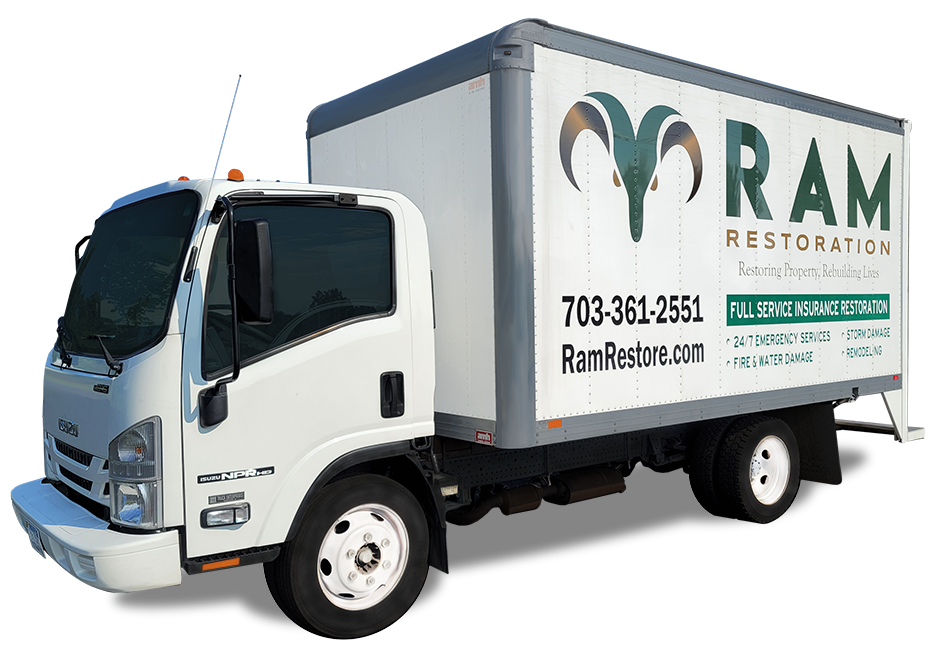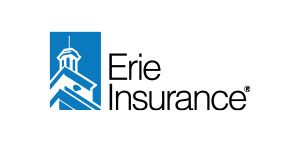Imagine waking up one morning to the deafening sound of thunder and the intense pounding of rain against your windows. As you rush to secure your home, you can’t help but feel a mix of anxiety and helplessness as you watch the storm ravage your surroundings. The next morning, the sun shines brightly, but the aftermath of the storm becomes painfully evident.
Surveying the damage, you see fallen trees, shattered windows, and a roof that seems to have been ripped apart by the fury of the storm. It’s at this moment that the magnitude of the situation sinks in, and you’re left wondering, “How do I deal with all this?”
Dealing with storm damage can be an overwhelming and emotionally draining experience. Not only are you faced with the physical destruction of your property, but you may also have to grapple with the loss of sentimental items and the disruption to your daily life. It’s important to remember that you are not alone in this journey.
This article will provide you with a comprehensive guide on dealing with storm damage, offering step-by-step instructions, expert tips, and insights to help you navigate the process. From understanding the impact of storm damage to assessing and repairing roof damage, cleaning up and restoring your property, and implementing preventative measures, we’ve got you covered.
So take a deep breath, gather your strength, and let’s embark on this journey together. With the right knowledge and support, you can overcome the challenges that come with storm damage and restore your property to its former glory.
Key Takeaways:
- Dealing with storm damage can be emotionally overwhelming and leave you feeling helpless.
- It’s important to remember that you are not alone and there are resources available to support your journey.
- This guide will provide you with step-by-step instructions and expert tips for dealing with storm damage.
- From understanding the impact of storm damage to assessing and repairing roof damage, we’ve got you covered.
- By following the guidance in this article, you can overcome the challenges and restore your property to its former glory.
Understanding the Impact of Storm Damage
Storm damage can manifest in various ways, depending on the type of storm. Common types of storm damage include wind damage, water damage, hail damage, and lightning damage. Understanding the specific impact that each type of storm can have on a property is essential for effective damage assessment and repair planning.
Wind damage is a common consequence of storms characterized by strong gusts of wind. It can result in fallen trees, damaged roofs, and broken windows. The force of the wind can cause structural instability and compromise the integrity of a property.
Water damage is another significant concern in the aftermath of a storm. Heavy rainfall or flooding can lead to water intrusion, which can cause extensive damage to walls, floors, and belongings. It can also create favorable conditions for mold growth, posing health risks to occupants.
Hail damage occurs when hailstones, with their varying sizes, pelt a property. This type of storm damage can cause dents on roofs, damage to gutters, and shattered windows. The larger and more powerful the hailstones, the more severe the damage can be.
Lightning damage refers to the destructive effects of lightning strikes on a property. Lightning can cause fires, structural damage, and electrical system failures. Even without a direct strike, the electrical currents can travel through wires and pipes, leading to significant damage.
Understanding the specific characteristics and potential damage caused by different types of storm events helps homeowners, insurance adjusters, and restoration professionals assess the extent of the damage and develop effective repair and restoration strategies.
Immediate Steps to Take After a Storm
After a storm, the safety of individuals is of utmost importance. Taking immediate action to assess and address potential hazards can help prevent injuries and ensure a safe environment. Here are some crucial steps to prioritize personal safety and minimize post-storm risks:
-
- Stay away from downed power lines:
One of the most dangerous post-storm hazards is downed power lines. They may still be energized and pose a severe risk of electrocution. It is essential to maintain a safe distance from any downed power lines, and report them immediately to the local utility company.
-
- Assess the structural integrity of your property:
Inspect your property for any visible damage or signs of structural instability. Look for cracks, leaning walls, or compromised foundations. If you suspect any structural damage, it is advisable to evacuate the premises and seek professional assistance to ensure the safety of everyone.
-
- Avoid contact with floodwater or exposed electrical components:
Floodwater can be contaminated with chemicals, sewage, or other hazardous substances, posing significant health risks. It is crucial to avoid contact with floodwater and use protective equipment such as boots and gloves if necessary. Additionally, never touch exposed electrical components, as they can cause severe electrical shocks.
-
- Secure your property:
Take steps to secure your property and prevent further damage. If safe to do so, cover broken windows or damaged areas with tarps or boards to protect against rain and further exposure to the elements. This temporary solution can help minimize further deterioration until professional repairs can be made.
-
- Contact local authorities and insurance company:
Notify your local authorities about any significant damage or emergencies, particularly if you require assistance or temporary shelter. It is also important to contact your insurance company to report the damage and initiate the claims process. Document the damage thoroughly by taking photographs or videos to support your claim.
By following these crucial steps after a storm, individuals can prioritize personal safety and take appropriate measures to address the immediate risks. It is essential to remain vigilant and seek professional assistance when necessary to ensure a thorough assessment and proper restoration of the affected property.
How do you deal with storm damage?
When it comes to storm damage, seeking professional assistance is crucial for effective repair and restoration. Hiring certified restoration companies or contractors with expertise in storm damage repair ensures that the job is done correctly and efficiently.
Professional storm damage repair and restoration experts have the necessary knowledge and experience to assess the extent of the damage and develop an appropriate plan of action. They have access to specialized equipment and techniques that allow them to handle a wide range of storm-related issues, from roof repairs to water damage cleanup.
One of the key advantages of hiring professionals for storm damage repair is that they can help expedite the restoration process. They understand the importance of timely action in preventing further damage and can work efficiently to restore your property to its pre-storm condition. By entrusting the repair and restoration work to experts, you can have peace of mind knowing that the job will be done correctly and effectively.
When selecting professionals for storm damage repair, it’s essential to consider their credentials and reputation. Look for certifications, licenses, and insurance that ensure the company or contractor is qualified and reliable. Online reviews and testimonials from previous clients can also provide valuable insights into the quality of their work and customer satisfaction.
Additionally, it’s beneficial to choose professionals who specialize in storm damage restoration. They will have the specific knowledge and skills required to address the unique challenges posed by storm-related damage. By hiring experts in the field, you can have confidence in the quality of their work and the long-term durability of the repairs.
Dealing with storm damage can be overwhelming, but hiring professionals for storm damage repair and restoration can make the process smoother and more efficient. Their expertise, equipment, and experience ensure that your property is restored properly, allowing you to focus on rebuilding and moving forward after the storm.
Assessing and Repairing Roof Damage
Roof damage is a common consequence of storms. Strong winds, heavy rain, and hail can cause significant harm to your roof, compromising its integrity. Therefore, it is crucial to assess and repair any damage promptly to prevent further issues. Understanding the signs of roof damage is the first step towards addressing the problem.
Inspecting Your Roof for Damage:
After a storm, carefully examine your roof to identify potential damage. Look for missing shingles, cracked or curled shingles, and visible signs of leaks. It is also essential to check the attic for any signs of water stains or dampness, as this could indicate roof damage. If you are unsure about the extent of the damage or if you notice severe issues, it is best to consult a professional roofing contractor.
Temporary Solutions:
If you notice minor damage, there are a few temporary solutions you can implement to prevent further damage until a professional can repair it. For example, you can use roofing cement to seal small cracks or leaks temporarily. However, keep in mind that these temporary fixes are not a substitute for professional repairs and should only be used as a temporary measure.
Importance of Professional Roof Repair:
While temporary solutions may help prevent further damage in the short term, it is crucial to engage professional roof repair services for a thorough assessment and proper restoration. Professional roofers have the expertise, equipment, and materials to address various types of roof damage effectively. Their in-depth knowledge enables them to identify hidden damage that may not be visible to the untrained eye.
By hiring professionals, you can ensure that all necessary repairs are completed correctly, preventing future issues and prolonging the lifespan of your roof. Additionally, professional roof repair may be required for insurance claims, as insurers often require documentation and proof of professional assessments and repairs.
When it comes to assessing and repairing roof damage after a storm, it is crucial to prioritize safety and consult experts in the field. Taking swift action and seeking professional assistance will help mitigate further damage, protect your property, and restore your peace of mind.
Cleaning Up and Restoring Your Property
Restoring your property after experiencing storm damage is a complex process that requires a structured approach. By following the essential steps in the restoration process, you can effectively return your property to its pre-storm condition.
One of the first steps in the restoration process is water damage cleanup. Water damage can occur due to roof leaks, flooding, or other storm-related factors. It is crucial to address water damage promptly to prevent further structural damage and the growth of mold and mildew.
Removing debris is another critical aspect of cleaning up after storm damage. Fallen tree branches, damaged materials, and other debris can pose safety hazards and impede the restoration process. Clearing the property of debris allows for easier assessment and repair of any damage.
After removing debris, it is essential to dry out affected areas. This can be accomplished through the use of dehumidifiers, fans, and other drying techniques. Proper drying helps prevent mold growth and reduces the risk of further damage to the property.
Sanitizing the affected areas is also crucial to maintain a healthy living environment. Disinfecting surfaces can help eliminate harmful bacteria and pathogens that may have been introduced during the storm.
Throughout the restoration process, it is important to document the damage for insurance claims. Take photographs and videos as evidence of the extent of the damage, as this will help streamline the claims process and ensure you receive the appropriate coverage for necessary repairs and restoration.
By following these steps and taking a thorough approach to cleaning up and restoring your property, you can effectively mitigate the effects of storm damage and restore your home to its pre-storm condition.
Preventative Measures to Minimize Future Storm Damage
Taking proactive steps to protect your home is crucial in minimizing damage from future storms. By implementing the following strategies, you can fortify your property and enhance its resilience against severe weather conditions.
1. Install Storm Shutters
One effective way to protect your home from storms is by installing storm shutters. These sturdy coverings can be quickly closed to prevent strong winds, flying debris, and rainwater from entering your windows and causing damage. Storm shutters are available in various materials and styles to suit different home designs and budgets.
2. Reinforce Doors and Windows
Ensure that your doors and windows are properly reinforced to withstand strong winds and impact. Consider installing impact-resistant doors and windows or fitting them with hurricane shutters. Additionally, reinforcing entry points with sturdy hardware, such as heavy-duty hinges, quality locks, and impact-resistant glass, can provide added protection against storm damage.
3. Trim Trees Near Your Property
Overhanging branches and tall trees near your home can pose a significant risk during storms. High winds can cause branches to break and trees to topple, potentially leading to extensive property damage. Regularly trim and maintain trees, especially those in close proximity to your house, to reduce the risk of falling branches and trees during storms.
4. Ensure Proper Drainage
Poor drainage can lead to water accumulation and flooding during heavy storms. To prevent water damage to your property, ensure that your gutters and downspouts are clear of debris and functioning properly. Consider installing French drains or other drainage systems to redirect water away from the foundation of your home.
5. Comprehensive Insurance Policy
Having a comprehensive insurance policy that covers storm damage is essential for protecting your investment. Review your existing policy to ensure it adequately covers the potential risks associated with storms. Consider obtaining additional coverage, such as flood insurance, to ensure your home and belongings are adequately protected.
By taking these preventative measures, you can significantly reduce the risk of storm damage and enhance the resiliency of your home. Implementing these strategies not only safeguards your property but also provides peace of mind during severe weather events.
Conclusion
Dealing with storm damage requires a comprehensive approach that combines proper management, prevention, and recovery strategies. By understanding the impact of storms and taking immediate safety measures, individuals can protect themselves and their property. Seeking professional assistance for repairs is crucial in ensuring the restoration process is done correctly and efficiently. Additionally, implementing preventative measures can minimize the risk of future storm damage.
Managing storm damage involves being proactive in assessing the extent of the damage and contacting certified restoration companies or contractors with expertise in storm damage repair. By entrusting the repairs to professionals, individuals can have peace of mind knowing that their property will be restored to its pre-storm condition.
Preventing future storm damage requires implementing storm-resistant features and taking steps to protect the home. Installing storm shutters, reinforcing doors and windows, and ensuring proper drainage can help minimize the impact of storms. It is also essential to have a comprehensive insurance policy in place to provide financial protection in the event of future storm damage.
In conclusion, with the right knowledge and actions, individuals can effectively manage storm damage, minimize risks, and restore their property. By following the steps outlined in this guide, individuals can navigate the challenges of storm damage and ensure a safe and resilient living environment.
FAQ
How do you deal with storm damage?
Dealing with storm damage often requires professional assistance. It is important to hire certified restoration companies or contractors with expertise in storm damage repair. They have the knowledge and equipment to assess the damage, restore your property, and ensure quality repairs. Hiring professionals also helps expedite the process and ensures your safety.
What immediate steps should I take after a storm?
After a storm, prioritize personal safety. Stay away from downed power lines, assess the structural integrity of your property, and avoid contact with floodwater or exposed electrical components. It is important to ensure a safe environment to prevent injuries. You should also document the damage for insurance claims.
How can I assess and repair roof damage?
Assessing and repairing roof damage requires careful inspection. Look for missing shingles, leaks, or visible cracks. If you notice any signs of damage, it is best to contact a professional to inspect and repair your roof. Temporary solutions, such as covering the damaged area with a tarp, can help prevent further damage before the repairs are done.
What should I do to clean up and restore my property after storm damage?
Cleaning up and restoring your property after storm damage requires a structured approach. Start by removing debris, drying out affected areas, and sanitizing to prevent mold growth. Depending on the extent of the damage, you may need professional assistance for water damage cleanup and restoration. Documenting the damage is crucial for insurance claims.
How can I minimize future storm damage?
Taking preventative measures can help minimize future storm damage. Install storm shutters, reinforce doors and windows, trim trees near your property, and ensure proper drainage. These measures can make your home more resistant to storms. It is also important to have a comprehensive insurance policy that covers potential storm damage.





















